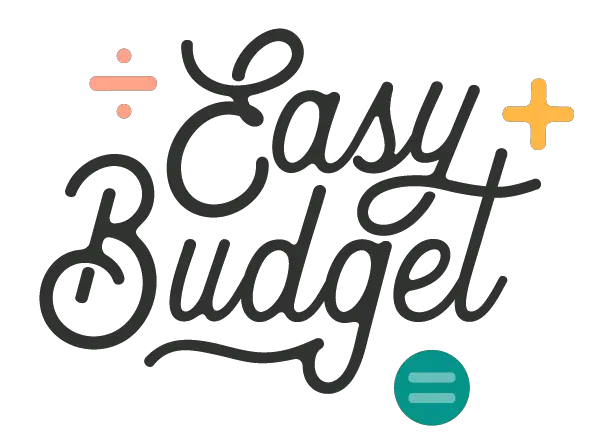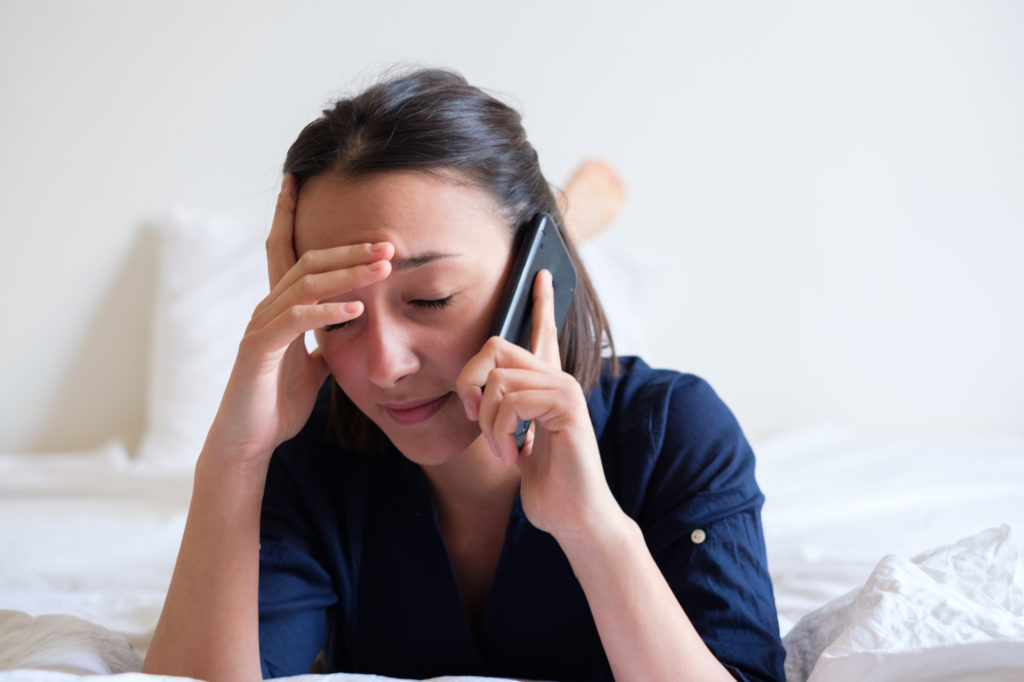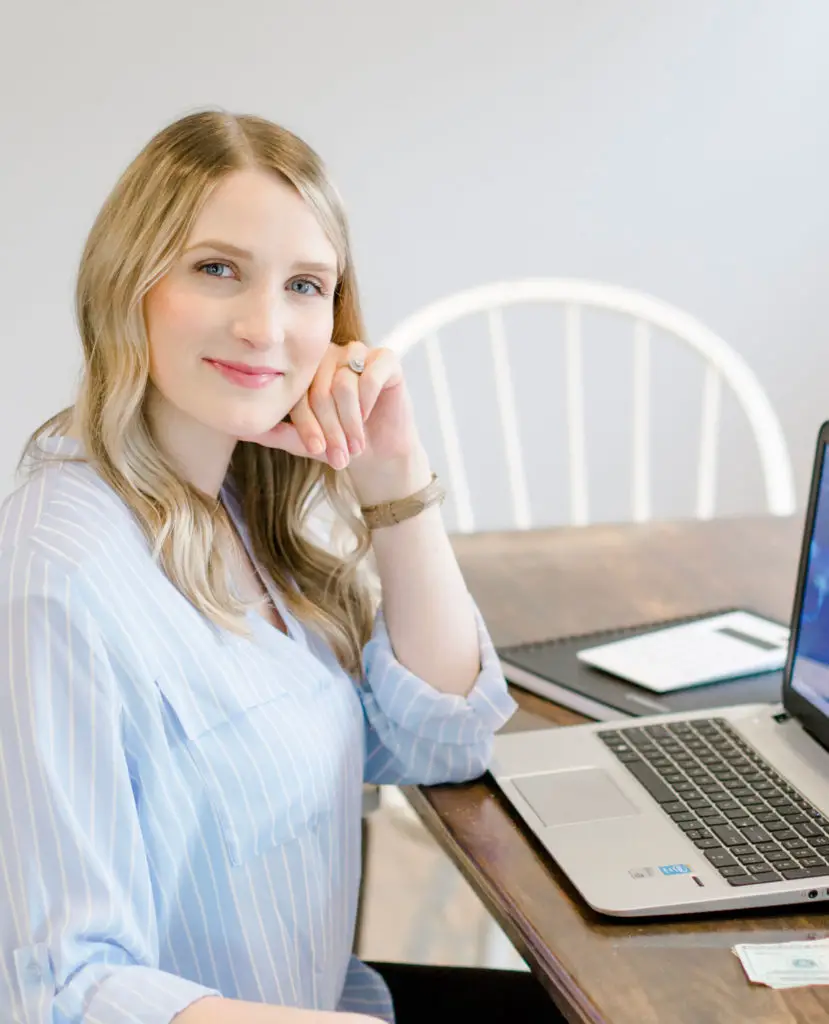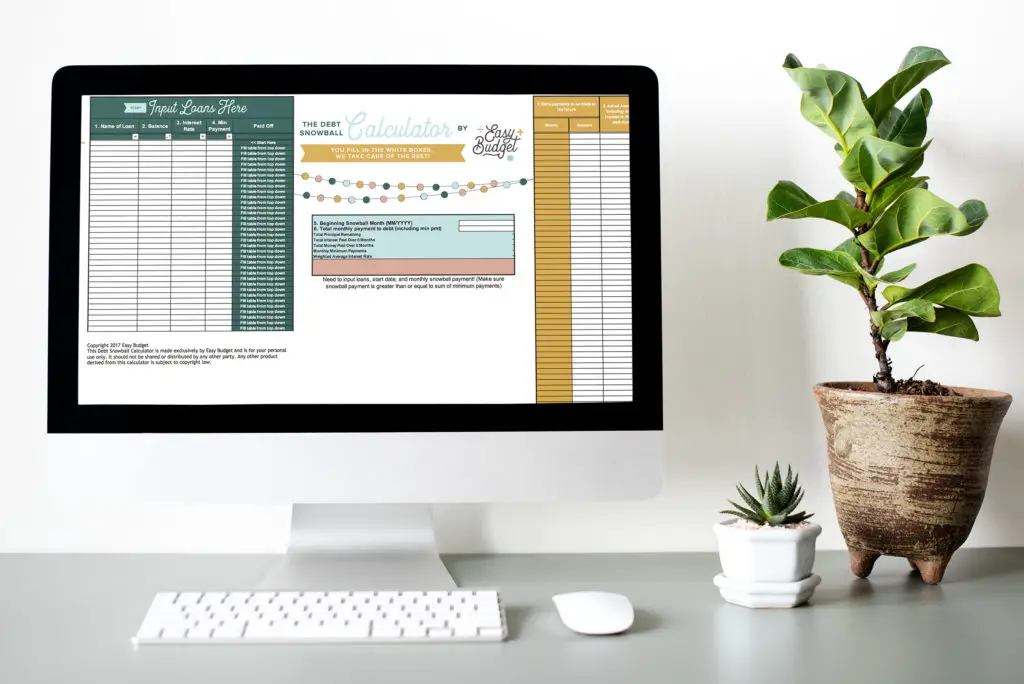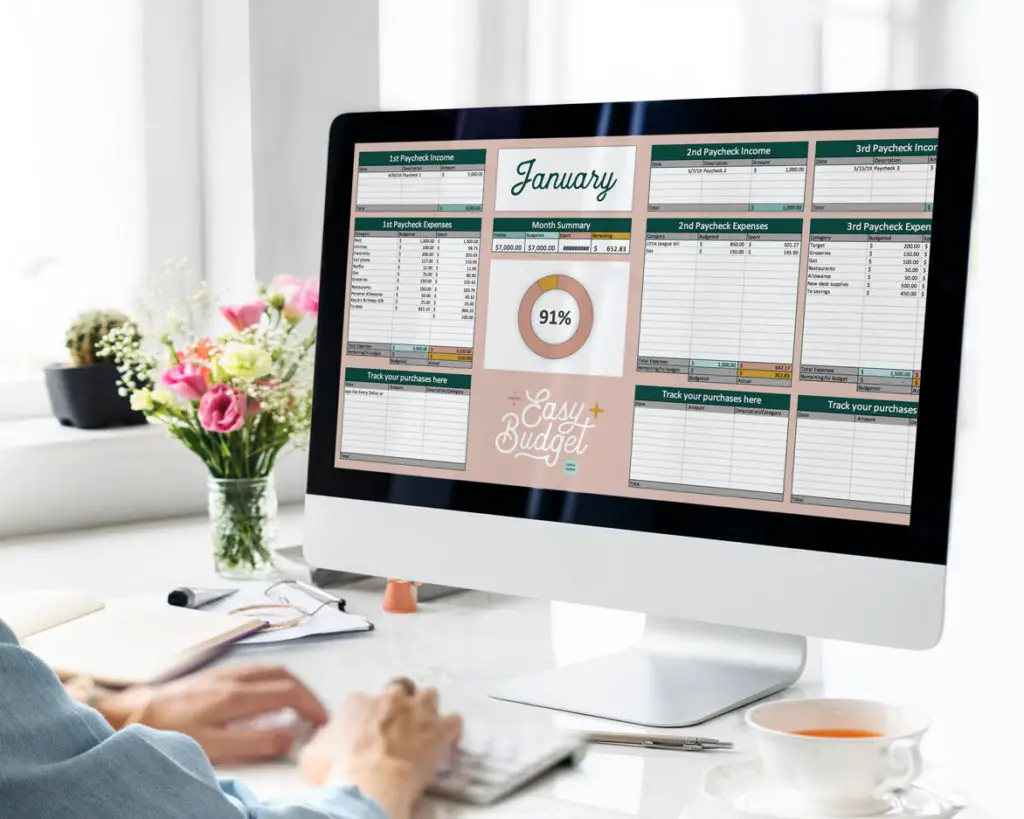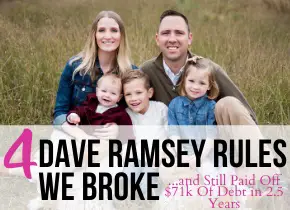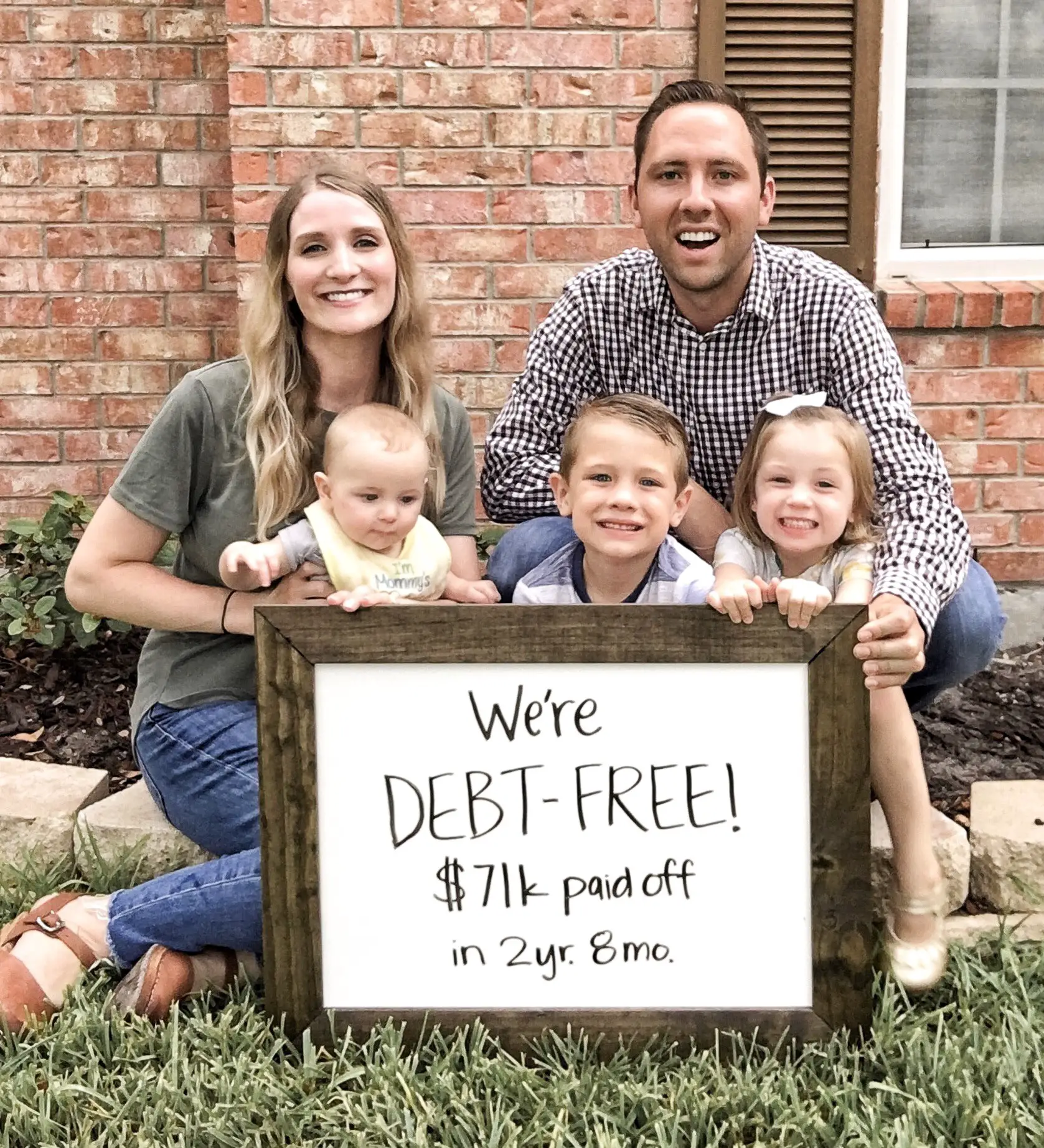This post may contain affiliate links where I earn a commission, at no additional cost to you, if you decide to make a purchase after clicking on a link. Please see our Disclosure Policy for full details. Thank you for your support!
Living with depression and anxiety is exhausting and, oftentimes, debilitating. Some days you wake up and just want to crawl back in bed. Some days you feel so anxious that nothing will calm you or give you peace of mind.
That’s why living with these mental health disorders are especially difficult in the realm of personal finance. When simply surviving takes up all of your bandwidth, how do you reconcile your budget or stay on top of your money goals?
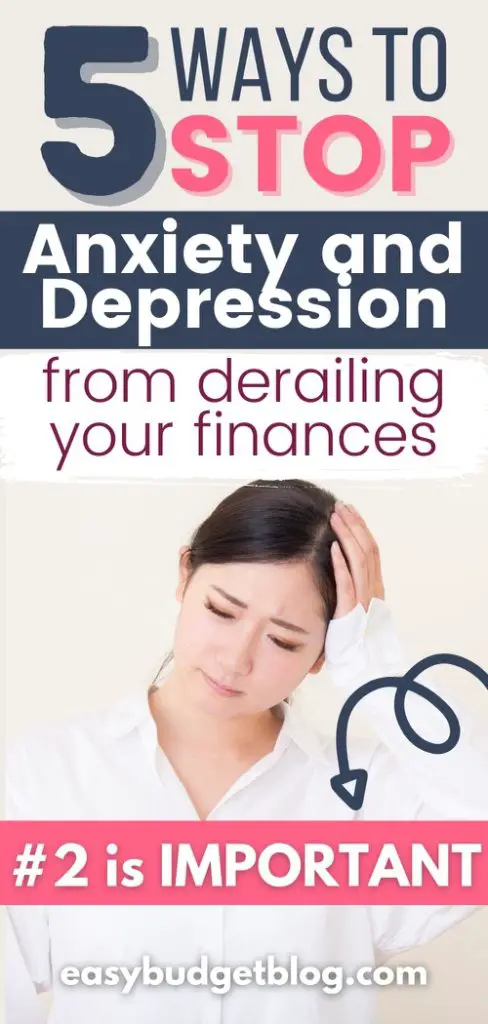
The reality is that one in five adults in the US live with a mental health disorder. That’s roughly 51.5 million Americans, or 20.6% of all US adults aged 18 and older. What does this mean? It means that this article has the potential to reach millions of people experiencing mental health disorders in regards to their individual money management.
We’re throwing these statistics from a reliable source at you not to overwhelm you, but because we want to nail down the point that mental health is a very real, very insidious problem. The stigma surrounding mental health disorders is a barrier to aiding people who need help, which is why we’re showing you 5 ways to stop depression and anxiety from derailing your finances.
5 Ways To Stop Depression and Anxiety from Derailing Your Finances
1. Make multiple budgets
A symptom of depression and anxiety is racing or ruminating thoughts. For people who are triggered by personal finance in this area, thinking about the worst case scenario over and over again is a common occurrence. When you consider extenuating circumstances in our time, like COVID-19, thinking about the “what ifs,” can consume your entire day.
What if I lose my job?
What if I go over budget?
What if I never pay off my debt?
What if I’m not where I’m “supposed” to be with my retirement?
What if I have an emergency I can’t pay for?
What if I get sick and have to go to the hospital?
What if I find myself in medical debt?
To combat this, try creating three, yes three, separate budgets. One for the worst case scenario, one for a normal scenario and one for the best case scenario. Is this more work up front? Yes, absolutely, however, it decreases the time you spend ruminating on the “what ifs,” of your financial life, because you’ve already played out these different scenarios on paper.
Not only does this budgeting technique place a boundary on your negative thoughts, it has the added bonus of being hyper aware of how your money behaves during different life events — which can be hard for those struggling with mental health disorders.
2. Take advantage of good days
We aren’t going to pretend like making three budgets is possible during a bad day while you’re focused on other things. That’s why, when you struggle with a mental health disorder, you need to capitalize on your good days. On your bad days, it’s important to listen to your body and brain and to rest. If you attempt to force yourself into working on your personal finances, you’re gonna have a bad time (as kids these days say). In other words: It’s just not productive.
Instead, on the days where you’re feeling motivated and like you can handle diving into the money aspect of your life, do so!
Make those three budgets
Unsubscribe from retail emails
Put your bills on auto draft
Reconcile your budget and make sure you’re on track for the month
Take your debit or credit card information off of websites you emotionally spend at
Do whatever it is you need to do to make good financial decisions when you’re not feeling so hot.
This is what we suggest to protect yourself, because sometimes when you have depression and anxiety, your brain tries to convince you that you need x, or that you can’t possibly live without x to pick up your mood.
Similarly, when you have these mental health disorders, you’re more than likely going to experience missing a bill or completely forgetting that something was drafted out of your bank account. That’s why, on good days, it’s important to check things off of your personal finance, so that on bad days, you can focus on you and not on money or triggering situations.
3. Budget for your health
It’s not a stretch to say that the American healthcare system, especially in regards to mental health, is broken. As a matter of fact, medical debt is the leading cause of bankruptcy in the United States. That’s why I consulted an expert in navigating mental illness within the current healthcare system.
Vee Weir, of Vee Frugal Fox, has lived with Major Depressive Disorder (MDD) and Generalized Anxiety Disorder (GAD) for over ten years and advocates for mental health education and low cost alternatives on her social media platforms.
Vee is self employed, so navigating healthcare with no health insurance is her specialty. Below are a few resources and techniques if budgeting for your mental health is difficult. Whether you have insurance or not, there are ways that you can budget for your wellbeing and there are resources for you, you just have to dig them out.
Since prescription drug prices aren’t regulated, they have the potential to be astronomical in price (remember Pharma Boy?). GoodRx, is a company that scans the market for the most competitive pharmaceutical coupons, and offers them to consumers.
GoodRx can save you up to 80% off of prescription retail prices, and in fact, Vee and I have both experienced this first hand. Vee is on Lexapro (Escitalopram) and Wellbutrin (Bupropion). With GoodRx, she shares her location and dosage, and the app shows her the lowest price of her prescriptions in the pharmacies in her area.
The retail price of Escitalopram at 20 mg, according to GoodRx, is $67.06. With the GoodRx coupon, you can pick it up at the Costco pharmacy for $9.79.
The retail price of Bupropion at 150 mg, according to GoodRx, is $75.73. With the GoodRx coupon, Vee can pick it up at a local grocery store pharmacy for $11.79.
That’s the difference between $142.79 per month and $21.58 per month. Just for using a FREE app.
GooxRX doesn’t even require you to login to get the coupons, and it works without/independent of insurance (so even if you have health insurance and prescription coverage, GoodRX can often still save you a bunch of money… but when you use a GoodRX coupon you forego using your insurance for the prescriptions).
Cerebral is something fairly new that Vee is trying out, but so far, so good. Cerebral is basically a subscription service for mental health medication, care counseling and therapy
You can choose from three mail plans:
- Medication and care counseling: *About $100 per month
- Medication and therapy: • About $180 per month
- Therapy only: $280 per month
*Pricing depends on your medication cost – Vee’s medication, Escitalopram (20 mg) and Bupropion (150 mg) total $20 per month and are shipped via Fedex to her home through Cerebral.
You can look into Cerebral for their introductory rates by filling out a brief survey online, scheduling a call with your licensed care provider (prescribes medication) and meeting a care counselor who will help you with your Cerebral journey. Each month you have your medication mailed to you, an appointment with your care counselor and unlimited chat access through the app to your care provider.
You’re assigned specific team members, so your care team stays the same and they hold your hand through the entire process.
Spending $100 per month on prescriptions delivered to your door, unlimited access to a psychiatrist and a monthly meeting with a licensed mental health care counselor? That’s a pretty good deal.
Related reading: 51+ Creative Ways to Save Money This Month
Peer to peer counseling
Peer to peer counseling is a little different than licensed therapy, but still effective and helpful on your mental health journey, especially if you can’t afford therapy sessions.
Peer to peer counselors are trained, experienced-based counselors, specializing in helping clients through traumas and mental health disorders through their lived experiences.
This option is especially helpful if you don’t need a diagnosis. Since Vee has dealt with MDD and GAD for 10 years, she doesn’t need a diagnosis– she has one already. Vee felt comfortable seeking a peer to peer counselor to help her through some emotionally taxing situations when she couldn’t afford a therapist.
Vee has used @lvlwellnessco for her peer to peer sessions in the past and fully recommends Jess! Jess also works on a sliding scale if payment is a barrier to help.
Sinking Funds
If you know you’re not going to have insurance, or you just have high deductibles with insurance, Vee suggests scheduling all of your primary care provider appointments around the same time each year.
This way, you can prepare all year for this slew of medical costs instead of stressing out over how you’re going to have to pay for this and that each and every month. By doing this, you can save a small increment each month and get your check up paid for in cash. Vee also explained her financial situation to her PCP and her doctor prescribed her MDD and GAD medication for one full year, meaning, she didn’t have to keep going back to her doctor and spending money for them to rewrite prescriptions that she had been on for 4+ years.
Vee suggests being open and honest about where you are in your financial situation with your health providers, because they tend to hate the system just as much as you do and will try to help you where they can.
Sinking funds are a practical and easy way to afford your healthcare when that’s the only real option you have.
Look Locally
The last resource Vee shared with me was to look at your local health and human resources office in your area. They have the ability to help you connect with sliding scale therapists, point you in the direction of low-cost or even free group therapy sessions and tell you different mental health resources that you may have not known about.
The people that work at these centers are more than happy to assist you and Vee has found that a simple call or visit is definitely worth it to figure out what options are available in your own backyard.
4. Make room for what brings you joy
Part of mental health is being intentional about your happiness. What brings you joy and what will help you through the bad times?
We may not like having to set even more money aside (especially when you’re on a debt free journey), but the reality is that things cost money. Budget for doing things that make you happy. Hobbies and projects. Places to go and see. Things that don’t necessarily bring you money, but bring you true enjoyment.
Your value isn’t tied to your productivity of how much you pay off, save or invest. There is more to life than that and having budgeted money for what you love will bring you more happiness and lessen the chances of you burning out.
5. Forgive yourself
We all have bad budget days (or years) and we all make money mistakes. This is just a fact of life as an adult! For people with mental health disorders, it’s easy to latch on to what we have done in the past to “get us here”.
Remember that not only do you have the obstacle of money management, which is difficult in and of itself, but you have another barrier: Your chemical imbalances that you can’t control.
It’s important for you to remember that you can and will be successful with finances. It may take more planning, more money spent on mental health and more intentionality, but you will reach your goals. A vital part of reaching those goals is forgiving yourself for any money mistakes in the past and letting those mistakes give you the wisdom to make more informed decisions in the future.
Your depression and anxiety may never go away completely, but you can keep moving forward and continue doing your best on your financial journey one step at a time.
This article was written in collaboration with Vee Weir from Weir Digital Marketing who shares about her financial journey and dealing with depression and anxiety along the way. For more from Vee, follow her at @veefrugafox on Instagram.
Did you find this post about navigating your finances while dealing with depression and anxiety helpful? Pin it to Pinterest for later or send it to a friend!

